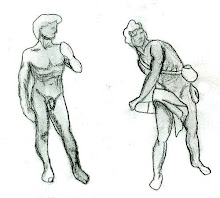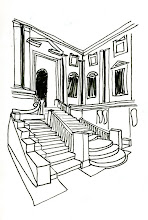Roth, (2007) “Ludwig Mies van der Rohe was born in Aachen to a family of stonemasons, and from them inherited a strong sense of craft in building construction.” (p. 469) Likewise students in the Interior Architecture program at UNC-G have been tough through time that good craft is everything. Not only does our studio courses reinforce this idea but also our history readings. Architects like Mies van der Rohe have proven that a well thought out design and good craft can make for a profitable career.
Public/ private:
Roth, (2007) “After World War Two, when American planners began to use Le Corbusier’s ideas as the basis for actual building, they often misappropriated the high-rise tower for housing since it allowed greater population density per acre.” (p. 478) This statement refers to a design that was originally planed for private use of the space but as time progressed designers crammed several occupants into these units, hence now public spaces.

Technique:
Massey, (1990) “Tassel house, Ixelles, Brussels, 1893. Horta’s first design in an entirely new style. A glazed roof with slender iron supports provides brightly lit interiors. Instead of the usual Belgian corridors, Horta uses a central hall and staircases, heralding the Modern Movement’s use of flowing spaces and ‘plan of volumes’…” (p.35) Victor Horta deliberately rejected the old way of design and used a newer more organic flowing technique; where the staircase flowed and curled into the wall then back to the floor. The space he designed was more whimsical then the traditional Belgian style of architecture.

Language:
Roth, (2007) “As with Rococo architecture, whose delicacy and irregularity in detail it resembled, this “new art”-or as the Parisian collectors called it, l’Art Nouveau—was employed largely for interiors. It appeared fully developed in the interiors of the Tassel House, Brussels, designed by Horta in 1892 [18.49].” (p.514) Again, Horta’s design spoke mostly of a new way of thinking about architecture and how it can be. His design reminds me of a dear friend of mine whom is actually from Belgium. My friend is a very talented musician who has tendencies of being a bit mysterious and peculiar. Like music and the Tassel House there are rise and falls, piano and fortes throughout the entire composition.
Virtual:
Roth, (2007) :As never before the forces of nature pulled on this building, for its huge wrought-iron and steel structure expanded and contracted over the course of the day as the sun passed from one side to the other… there seemed to be a denial of weight as well, for there were no massive stone or concrete buttresses to resist the lateral thrust at the bottom of the arch.” (p.490) Paxton’s Crystal Palace was an enormous glass and steel structure that was built in the 1851 for the world fair. The concept of this building was to be an interior space that made its inhabitants feel as if they were outside. Paxton was able to accomplish this great feet by using materials that virtually eliminated the mass of a typical wall structure at that time.









No comments:
Post a Comment